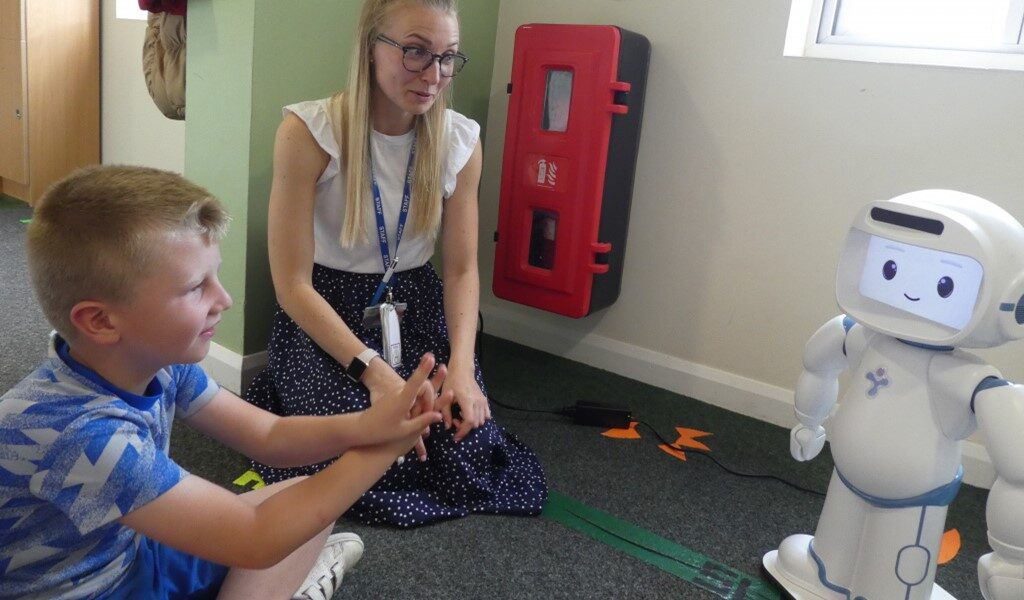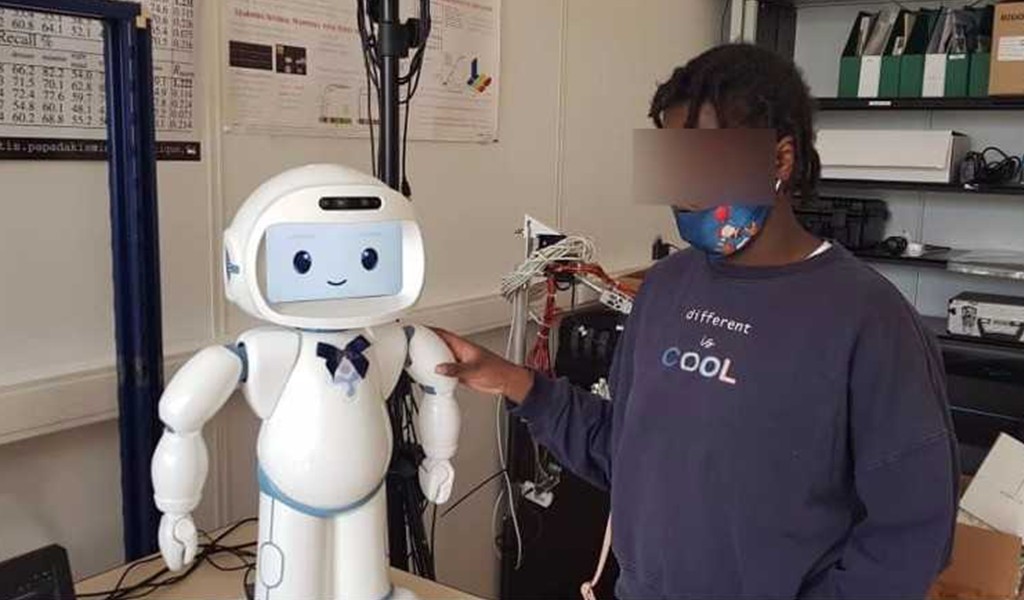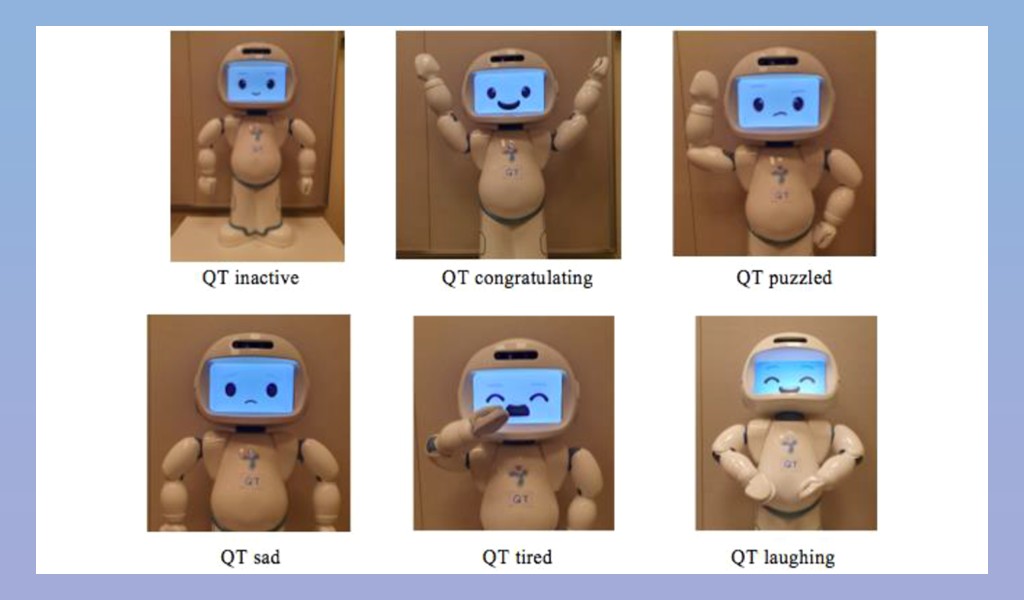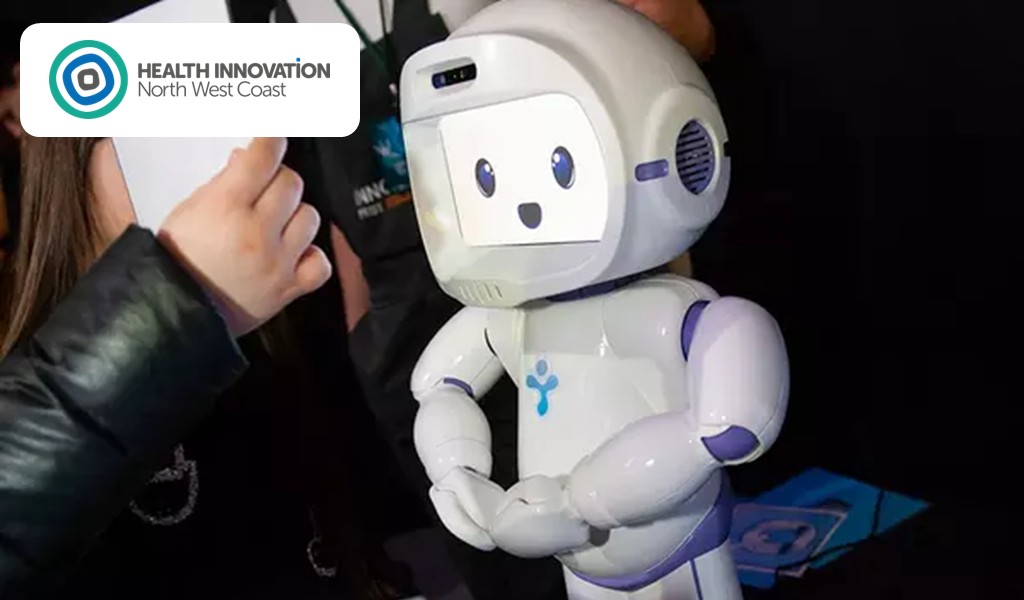Acorn Park is a specialized schools supporting young autistic students ranging from 4 to 19 years old. The school provides a diverse range of education support for students. Below is the review of Philippa Whipp, Acorn park head teacher from Using Autism Robot to Engage Students with Autism and Other Special Educational Needs in their diverse educational set up.
” QTrobot is an expressive social robot designed as an assistive tool for teachers and therapists alike, to support autistic children and young people. The robot offers pupils engagement opportunities and interactions – speech, facial expressions, and movements – that are predictable, consistent, and non-judgmental. QTrobot creates a third party in the learning experience, celebrating correct responses and guiding the children through verbal and visual prompts.”
Autism Robot Ease of Use and Set up:
“It often takes lots of time and planning to introduce a new piece of kit, so we were very happy to discover that we literally just needed to take QTrobot out of the box and turn it on, and simply connect two tablets – one for the learner, one for the teacher. The teacher controls the input to the robot, while prompts for a visual or verbal response appear on the learner’s tablet, after which it returns to a blank screen. It is extremely simple and intuitive to operate, so it can be used by non-specialists. Alongside various pre-set routines and games, easily accessible programming tools allow new content to be built. This opens up many more possibilities, such as bespoke tasks and responses tailored to a child’s needs and based upon specific progressive learning expectations for that individual.”
Introducing Autism robot to students:
“Initially, QTrobot stayed in my office – a non-threatening introduction for our pupils. We began with the simplest functionality – programmable speech. It soon became apparent that even our older pupils, whom we had assumed would not be interested, decided QTrobot was ‘cool’ enough to acknowledge with a wave. This ‘natural’ introduction allowed the pupils to see that the robot was not authoritarian in any way, and did not place demands on those interacting with him. There were also ‘silly moments’ when QTrobot would say something funny, and the children became very relaxed towards him.”
Impact on Students:
“It was like coaching by ‘osmosis’, as staff recognized QTrobotr’s impact on the children. Asking and responding to questions and answers in this way, is more conducive to learning for autistic pupils and avoids feelings of frustration or ‘failure’.
QTrobot has been very successful connecting with all our pupils – our non-verbal children also respond positively to him, mirroring his movements.“
“Working with the development team at LuxAI, it’s very apparent that their focus is on cognitive impact rather than clever animatronics. In fact, QTrobot’s lack of ‘human-ness’ is an asset. There are no confusing gestures or facial expressions – a simple wave or smile, one that our pupils become accustomed to – means they can read those cues and focus on their learning, rather than trying to decode behaviors.“
Impact on Staff:
“Staff began requesting classroom visits from QTrobot, he rapidly became a regular part of everyday, and this revealed some unanticipated benefits for our teaching staff. They observed his deliberate, precise teaching style, maintaining consistently positive interactions, and the progress children made. When children responded incorrectly to questions, QTrobot remained non-judgmental and placed no demands upon them, he provided them with scaffolding and opportunities to rethink and try again, and if they were unsuccessful after several attempts he simply modelled the correct response.”
New Ways to Use the Autism Robot:
“In the future, we are considering using QTrobot to help pupil’s transition into school, especially for children who have been out of school for prolonged periods of time – adapting to a new environment and everything that that entails can be daunting. The autism robot would act as a bridging tool between home and school, explaining daily expectations and delivering messages in a non-directive, predictable way, and providing assurance and support.”





